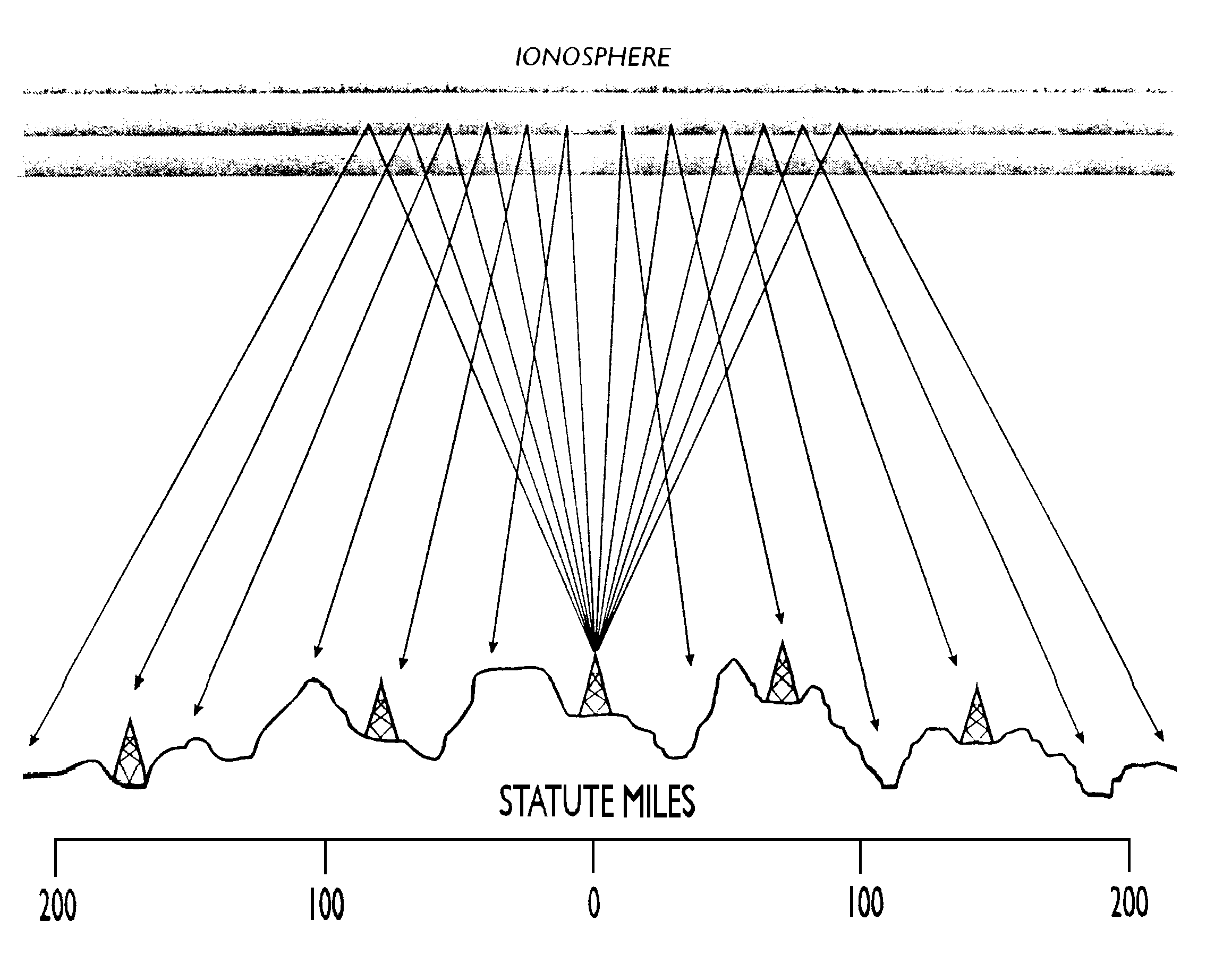NVIS Antenna
The Near Vertical Incident Skywave (NVIS) antenna is one that provides the majority of its radiation at an extremely high angle. That is to say the major lobe is between 75 and 90 degrees to the earth's surface. This will provide excellent omni-directional communication out to a distance of 300 to 500 Kilometers. The maximum frequencies involved will be as low as 1.8 Mhz under very poor conditions to as high as 14 Mhz under excellent conditions (which we have not seen in many years), with the most usable being between 3.5 Mhz (80M) and 7.3 Mhz (40M).
Near Vertical Incidence Skywave (NVIS) is a propagation mode which uses high angle radiation to send signals almost straight up to be reflected back to Earth for very effective short to medium distance communications. This mode of operation makes it ideal for in-state communications during disasters or other emergency situations. The military has used NVIS techniques for decades to provide short haul communication with other units on the ground.

The AS-2259/GR is an NVIS (near vertical incident skywave) military antenna for short to medium range communications on the lower HF bands. It has been made over the years by several manufacturers, and when available, they are usually somewhat expensive. This is pretty much the same antenna as the Collins 637K-1, the Telex Model 1990, and the Harris RF-1936.
A simple NVIS antenna can be constructed as shown below. This design is thanks to Dr. Carl O. Jelinek N6VNG (SK). In my recontruct of this design I use 4 @ fiberglass "cammo" poles for portable EMCOMM operations rather than a PVC mast. Fiberglass "cammo" are inexpensive and readily available at hamfests. I use a PVC cap to anchor the wires (as shown) at the top of the fiberglass mast.
With a good antenna tuner this antenna will operate over a wide frequency range allowing NVIS operations in a variety of solar conditions.
N3OC also has an excellent description of a similar homebrewed NVIS antenna here.
